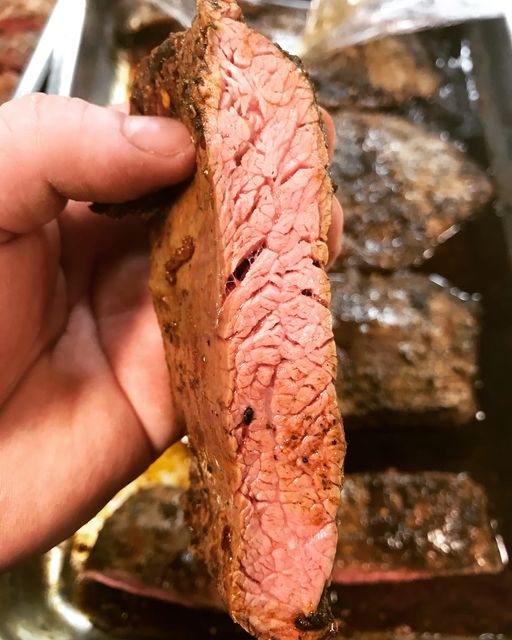Flank steak and roast are two different cuts of beef that have distinct characteristics and are often used in different cooking methods.
- Flank Steak:
- Location: Flank steak comes from the abdominal muscles of the cow, specifically the lower chest or abdominal area.
- Texture and Flavor: It is a lean and fibrous cut with a strong beefy flavor.
- Cooking Method: Flank steak is best when cooked quickly at high temperatures. It’s commonly used in grilling, broiling, or pan-searing. It’s important not to overcook flank steak to prevent it from becoming tough.
- Roast:
- Location: A roast can come from various parts of the cow, such as the chuck, sirloin, or rib areas. Common roasts include chuck roast, sirloin roast, and rib roast.
- Texture and Flavor: The texture and flavor of a roast can vary depending on the specific cut. For example, a chuck roast has more marbling and connective tissue, which can result in a juicy and flavorful roast when slow-cooked.
- Cooking Method: Roasts are typically larger cuts that benefit from slow cooking methods such as roasting, braising, or slow cooking in a crockpot. These methods help break down the connective tissues, resulting in a tender and flavorful roast.
In summary, flank steak is a lean, quick-cooking cut that is well-suited for grilling or searing, while roasts are larger cuts that benefit from slower cooking methods to tenderize and develop flavor. When preparing flank steak, it’s essential to cook it quickly to keep it tender, while roasts are often cooked low and slow to achieve a tender and succulent result.
